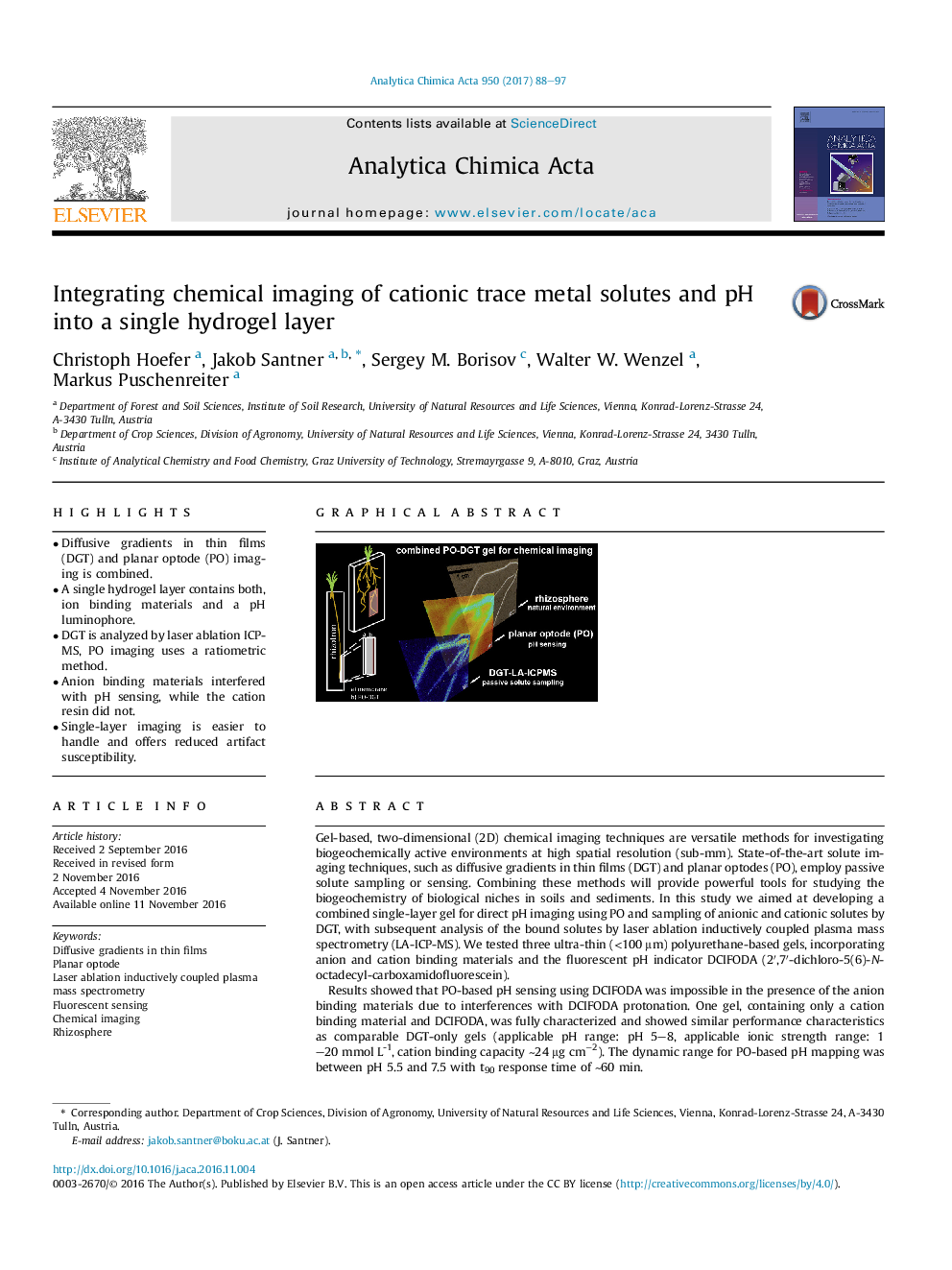| Article ID | Journal | Published Year | Pages | File Type |
|---|---|---|---|---|
| 5131070 | Analytica Chimica Acta | 2017 | 10 Pages |
â¢Diffusive gradients in thin films (DGT) and planar optode (PO) imaging is combined.â¢A single hydrogel layer contains both, ion binding materials and a pH luminophore.â¢DGT is analyzed by laser ablation ICP-MS, PO imaging uses a ratiometric method.â¢Anion binding materials interfered with pH sensing, while the cation resin did not.â¢Single-layer imaging is easier to handle and offers reduced artifact susceptibility.
Gel-based, two-dimensional (2D) chemical imaging techniques are versatile methods for investigating biogeochemically active environments at high spatial resolution (sub-mm). State-of-the-art solute imaging techniques, such as diffusive gradients in thin films (DGT) and planar optodes (PO), employ passive solute sampling or sensing. Combining these methods will provide powerful tools for studying the biogeochemistry of biological niches in soils and sediments. In this study we aimed at developing a combined single-layer gel for direct pH imaging using PO and sampling of anionic and cationic solutes by DGT, with subsequent analysis of the bound solutes by laser ablation inductively coupled plasma mass spectrometry (LA-ICP-MS). We tested three ultra-thin (<100 μm) polyurethane-based gels, incorporating anion and cation binding materials and the fluorescent pH indicator DCIFODA (2â²,7â²-dichloro-5(6)-N-octadecyl-carboxamidofluorescein).Results showed that PO-based pH sensing using DCIFODA was impossible in the presence of the anion binding materials due to interferences with DCIFODA protonation. One gel, containing only a cation binding material and DCIFODA, was fully characterized and showed similar performance characteristics as comparable DGT-only gels (applicable pH range: pH 5-8, applicable ionic strength range: 1-20 mmol L-1, cation binding capacity â¼24 μg cmâ2). The dynamic range for PO-based pH mapping was between pH 5.5 and 7.5 with t90 response time of â¼60 min.In a case study we demonstrated the gel's suitability for multi-analyte solute imaging and mapped pH gradients and concurrent metal solubility patterns in the rhizosphere of Salix smithiana. pH decreases in the rooted soil were co-localized with elevated solute fluxes of Al3+, Co2+, Cu2+, Fe, Mn2+, Ni2+ and Pb2+, indicating pH-induced metal solubilisation.
Graphical abstractDownload high-res image (280KB)Download full-size image
